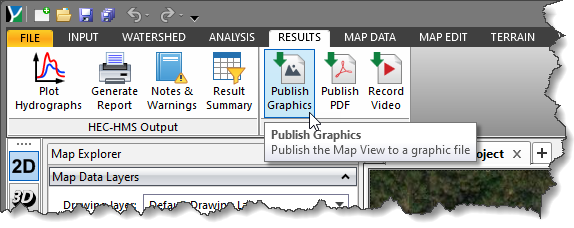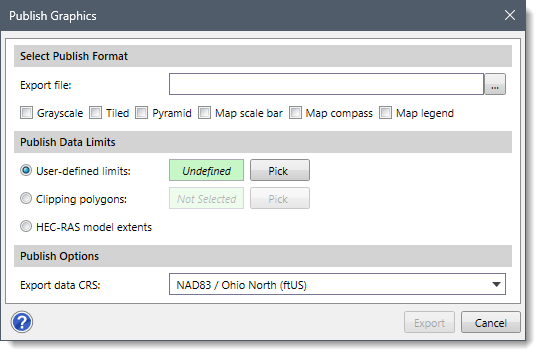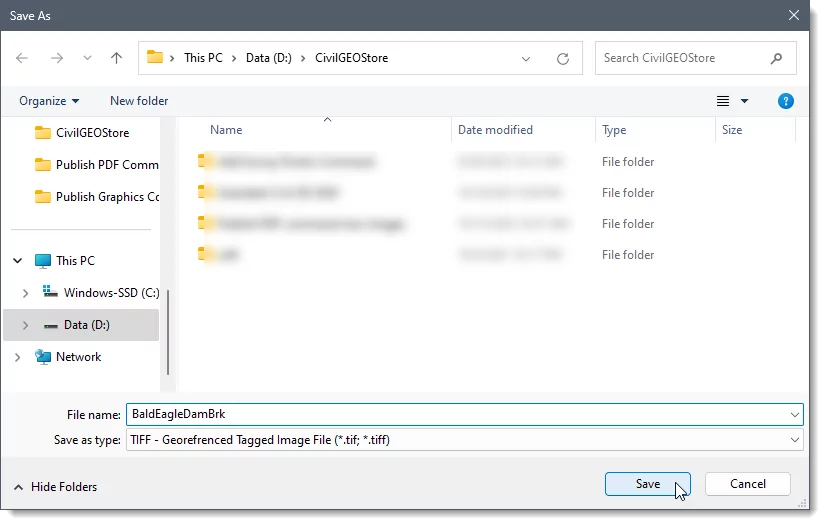
Welcome to CivilGEO Knowledge Base
Welcome to CivilGEO Knowledge Base

Welcome to CivilGEO Knowledge Base
Welcome to CivilGEO Knowledge Base
In CivilGEO software, the Publish Graphics command allows the user to publish the Map View data to a graphic file. Saving the Map View data in a graphic file allows the user to use it with other applications effortlessly.
The user can also publish the Map View data into PDF and video files with the following commands:
Follow the steps below to use the Publish Graphics command:



The following sections describe how to use the Publish Graphics command and interact with the above dialog box.
The Select Publish Format section allows the user to define the location where the user can save the created graphics. Click the […] button beside the Export file entry to specify the directory and the file name to save the graphics. The software will display the Save As dialog box. From the displayed dialog box, browse to the location to save the file, enter the file name (it should have a file extension of .tif or .tiff), and then click the [Save] button.

On clicking the [Save] button, the Publish Graphics dialog box will be redisplayed, and the complete directory path and file name will be shown in the Export file entry.

The user can check the checkboxes available in the Select Publish Format section to export the graphics data in different formats. The following options are provided:
This section is used to define the maximum limits for publishing the graphics.

The following options are available:
This section allows the user to select the CRS to be used for the published Map View data.

The Export data CRS dropdown combo box allows the user to select the CRS for the published Map View data. The dropdown combo box contains the CRS of all the loaded layers available in the model.
When all the options have been properly defined, click the [Export] button. The software will publish the Map View data into the graphics file at the selected location.
 1-800-301-02-955
1-800-301-02-955
 608-729-5100
608-729-5100
(US and Canada)
 [email protected]
[email protected]
 +1 608-729-5100
+1 608-729-5100
CivilGEO India
Graphix Tower, A-13 A
3rd Floor, Sector 62
Noida, Uttar Pradesh 201309
IndiaTel:
1-800-301-02-955 or
+91 022-3831-8601
CivilGEO United States
8383 Greenway Blvd
6th Floor
Middleton, WI 53562
USATel:
608-729-5100 or
800-488-4110
Copyright © CivilGEO, Inc. All rights reserved. The CivilGEO logo, “GeoSTORM”, “GeoHECHMS”, “GeoHECRAS”, and “Ready To Engineer” are registered trademarks of CivilGEO,Inc.
All other brands, company names, product names or trademarks belong to their respective holders.
We use cookies to give you the best online experience. By agreeing you accept the use of cookies in accordance with our cookie policy.
When you visit any web site, it may store or retrieve information on your browser, mostly in the form of cookies. Control your personal Cookie Services here.
The ZoomInfo WebSights snippet drops three cookies to track Unique Visits:
1. _pxhd - Related to the Perimeter X security layer (Perimeter X isused to prevent bot attacks).
2. _cfduid - Related to the CloudFlare security layer (CloudFlare is the Network Security protocol that ZoomInfo uses to orchestrate the rate limiting rules).
3. visitorId - This is how WebSights identifies recurring visitors








